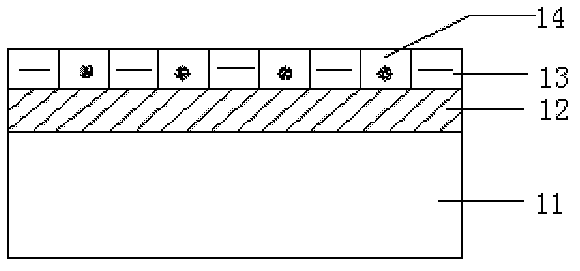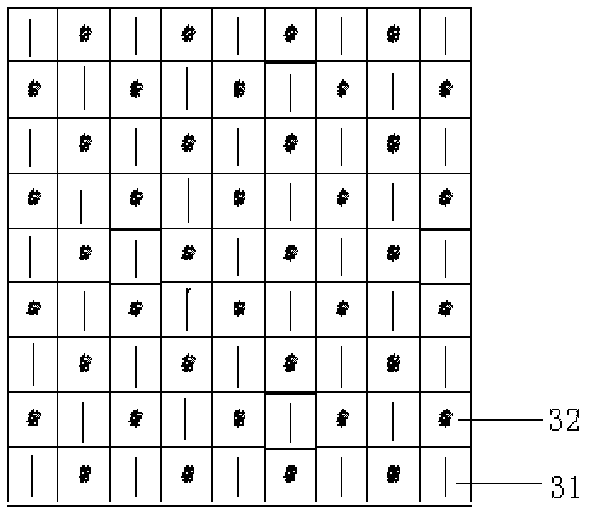Selective arrangement method of discrete nano-material
A nanomaterial, selective technology that can be used in metal coating processes, processes for creating decorative surface effects, decorative arts, etc., to solve problems such as lack, low cost, and limitations of nanomaterials or substrates
- Summary
- Abstract
- Description
- Claims
- Application Information
AI Technical Summary
Problems solved by technology
Method used
Image
Examples
Embodiment Construction
[0023] The specific process of arranging discrete semiconductor nanowires will be described in detail below with reference to the accompanying drawings, and an exemplary embodiment of the present invention will be presented.
[0024] The structure of the present invention is as attached figure 1 As shown, it includes four parts: a substrate 11 , an oxide layer 12 , a non-polar region 13 and a polar region 14 . In the present invention, the surface of the substrate can be modified into stripe or dot matrix regions by using one-dimensional or two-dimensional phase gratings, as shown in the attached figure 2 , 3 shown. 21 and 22 represent the non-polar and polar regions of the stripe type substrate respectively, and 31 and 32 represent the non-polar and polar regions of the dot matrix type substrate respectively. Striped substrates can be used to arrange linear nanomaterials such as nanowires and nanobelts, and lattice substrates can be used to arrange spherical nanomaterials...
PUM
 Login to View More
Login to View More Abstract
Description
Claims
Application Information
 Login to View More
Login to View More - R&D
- Intellectual Property
- Life Sciences
- Materials
- Tech Scout
- Unparalleled Data Quality
- Higher Quality Content
- 60% Fewer Hallucinations
Browse by: Latest US Patents, China's latest patents, Technical Efficacy Thesaurus, Application Domain, Technology Topic, Popular Technical Reports.
© 2025 PatSnap. All rights reserved.Legal|Privacy policy|Modern Slavery Act Transparency Statement|Sitemap|About US| Contact US: help@patsnap.com



